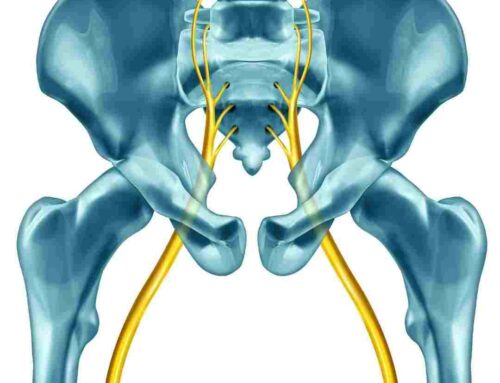Updated 10/8/23; Originally posted 1/30/22
Pregnancy and a new baby usher in body changes that sometimes cause pain – particularly in the pelvic and low back regions. This post is a Tale of Two Pregnancies and how Pilates with Zoa helped women to:
- avoid a repeat of pregnancy hip and low back pain
- eliminate pelvic pain and weakness postpartum
Becoming a mother is a beautiful endeavor but not for the weak of heart and definitely not for the lax of pelvic floor and core stabilizing muscles! Read on to learn how Pilates was a healing tool during pregnancy and after labor.

Benefits of Prenatal Pilates
A woman’s body changes dramatically during pregnancy. The growing baby changes your weight distribution, muscular tension, balance, and posture. Pregnancy related hormones like relaxin make your connective tissue more pliable so the bones of your pelvis can shift and allow the baby to glide out of the birth canal. The extra weight required to grow and sustain a whole baby challenges all of your muscles. All in all, pregnancy is hard on the body and it makes sense to look for ways to self-care and feel great.

Pilates throughout pregnancy makes a big difference in your overall comfort, strength, and preparation for a smooth labor. When you take Pilates with Zoa, you will:
- strengthen needed postural muscles
- lower tension in uncomfortable places like the low back and hips
- laugh and learn about your ever changing body!
- increase your ability to breath effectively while a baby pushes on your insides
- wake up and tone your pelvic floor
- get your lower abdominal muscles to hold up that baby better!
Pilates for Prevention of Pregnancy Pains
BS came to me after the birth of her first child with two goals a) strengthen her core muscles so she could perform her challenging physical activities with greater ease and b) fix the constant tension in her hip that she had been living with “forever”. She was 2 years postpartum, the stars had aligned, and now was the right time to give her core and hips some needed love.
We got to work with Group Pilates Equipment Classes and she was soon feeling pretty good when congratulations were in order for baby number 2! Because of my specialized knowledge about pregnancy (from having been a natural childbirth educator), she planned to continue her group Pilates Equipment classes as long as possible so she would feel her best.

Every week of her pregnancy, BS attended class but what we did in class varied quite a bit based on how she and the other students felt that day (true of all of my classes). Some days were more about releasing tension while others were more focused on building strength. As her belly grew, I made adjustments to the exercises selected that day and to the positions we used in order to maintain comfort, keep her safe, and not squish the baby!
Pilates for Piriformis Syndrome During Pregnancy
BS’s first pregnancy came with piriformis syndrome which created hip tension and pain, low back discomfort, and sciatic nerve tingles with pain shooting down her leg. We were both eager to avoid that from happening with her second pregnancy. Three elements were important for supporting BS’s hips during all three trimesters:
- One Sided Hip Exercises – Pilates hip exercises done one leg at a time were particularly important for BS so that her weaker muscles could talk to her brain and work optimally. She needed to ensure that her piriformis muscle and its nearby neighbors were not overworking or underworking during every exercise.
- Fascia Release – Knowing that BS’s body carries a memory of holding tension in her hips, we were proactive about keeping her hips a low tension area. Every class incorporated fascial release as a preventative tool during the beginning and end of class.
- Pelvic Floor – The pelvic floor’s job doubles or more during pregnancy. It’s strength and flexibility need to grow as the baby grows. Pilates is great at encouraging pelvic floor engagement and strength. We ensured balance by incorporating additional breath and pelvic floor work into class which helped BS and her peri/postmenopausal classmates too!
At home throughout her pregnancy, BS sat at the computer for job #1, followed her toddler around for job #2, did physical farm/garden work for job #3, and came to Pilates class. She still felt good at 38 weeks thanks to Pilates. Life’s schedule did not allow her to take class at 39 weeks, but we had already established the options for returning to class postpartum – babies welcome! I might once again get lucky enough to have the privilege of holding a tiny baby while his or her mom takes class! If you want to help feeling fabulous throughout your pregnancy, let’s talk! You can come into the studio or we can work virtually.
Benefits of Postpartum Pilates
After the whirlwind of birth and the babymoon period of 40 days/6 weeks, American society tells us we should back to pre-pregnancy normal. Wrong!
It takes typically 9+ months to grow your baby and it should take 9+ months for you and your beautiful babe to recover from birth, learn to breastfeed, find a regular time to take a shower, regain your energy, find your core muscles, and figure out this new life together.

If you are experiencing pain in your hips, low back, pelvis, shoulders, neck, or legs when you move or stand or pickup heavy things (like your baby) but you have the “all clear” from your doctor – you are in the right place to receive help.
After birth, your body has many things to heal and equilibrate to your new normal.
- Your core muscles probably split apart (as designed) in order to accommodate the growing baby; now they should be pulling back together to avoid a permanent diastasis recti.
- Your pelvic floor stretched and possibly tore or received a cut during birth; now it needs to shrink and strengthen and reconnect.
- Your internal organs were pushed out of the way to make space for baby; now they need massaged into their proper places.
- Your connective tissue had an enforced relaxing vacation due to pregnancy hormones; now you need to rebuild your tension network to feel strong again.
- Your posture – woah! Your spine, shoulders, and pelvis are ready to get realigned and stay in their optimal places.
- Your brain needs to revise its internal map of your body due to all the changes that pregnancy and birth brought.
Postnatal Pilates addresses all of these in a gentle, healing manner that brings lasting control to your muscles, calms your nervous system, and leaves you feeling good.
Pilates to Stop Post Baby Pelvic Pain
Francia birthed her second baby and was successfully breastfeeding her but was experiencing intense pelvic pain whenever she tried to get out of bed, bend over to pick up her toddler, or walk. Her six week postpartum checkup with her obstetrician yielded suitable recovery from birth but did nothing to address her pain. Luckily she called me and came in for her First Session.

Once I got Francia into a comfortable position where her brain could relax, we explored together what her body could and could not do without experiencing pain. We had our starting point! Her first exercise was to breathe – correctly and with a lot of thinking about the body. Breathing is a great way to get started postpartum or anytime the core needs improvement.
Dealing with Postpartum Pelvic Pain
Francia chose a Personal Body Vitality Plan which gave her a weekly mini private session with me and at home guided assignments via video/audio. We both felt that the ability to focus daily attention to her pelvic floor, lower abdominal muscles, outer hip muscles, and breathing was going to be key to quick improvement. She opted into a second mini (15 min) private session with me most weeks which further reinforced the exercises while allowing me to better guide her mindset and awareness of the inner workings of her body.
We slowly added a few simple mat Pilates exercises and expanded the breathwork. Because Francia’s core and pelvic floor had a difficult pregnancy and birth, her inner thighs were tight. She hurt when her knees separated wider than a few inches. We worked to strengthen her weak outer hips and her abdominal and pelvic floor muscles improved. After a few weeks she could open her legs comfortably again.

Francia did a great job of following her plan most days, but no one is perfect when you have a baby, a toddler, a husband on deployment, and older family to care for. By the time Francia’s 3 month Personal Body Vitality Plan ended, she was playing on the floor with her toddler, picking up her children, and getting out of bed all pain free! She wants to get stronger still, but she reached her goal of being pain free post baby – and I look forward to helping her with a new strength oriented goal – and you too!





